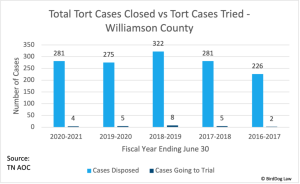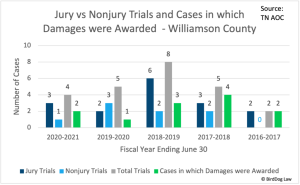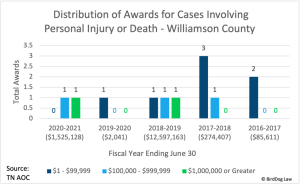Where plaintiff tripped on an uneven sidewalk and brought a GTLA premises liability suit against defendant city, plaintiff could not show constructive notice because she could not show how long the condition had existed.
In Mitchell v. City of Franklin, Tennessee, No. M2021-00877-COA-R3-CV, 2022 WL 4841912 (Tenn. Ct. App. Oct. 4, 2022), plaintiff was leaving a church service and walking on sidewalks owned by defendant city when she tripped and fell. Plaintiff alleged that her fall was caused by an “abrupt change of elevation caused by a raised portion of the sidewalk.” Plaintiff filed a GTLA case against the city, and the trial court ultimately entered judgment in favor of the city, which was affirmed in part and reversed in part on appeal. Of note, the city remediated this sidewalk condition after plaintiff’s fall, and no measurement of the height variation was taken at any time prior to the remediation.
Two sections of the GTLA were potentially implicated in this action. Tenn. Code Ann. § 29-20-205 “removes immunity for injury caused by the negligence of a public officer or employee,” but the statute lists several exceptions, including that immunity is not removed for the performance or failure to perform a discretionary function (subsection (1)) or for the failure to make or negligent performance of an inspection (subsection (4)). The trial court granted summary judgment under this statute, finding that plaintiff could not prove liability due to these exceptions, and review of this issue was waived on appeal. The Court of Appeals pointed out, however, that “liability for injuries under section 29-20-203 caused by a defective, unsafe, or dangerous condition is not subject to the exceptions of section 29-20-205” and that “the City’s immunity may still be removed under section 29-20-203 even though it retained immunity under section 29-20-205.” (internal citation omitted).
Continue reading
 Day on Torts
Day on Torts




